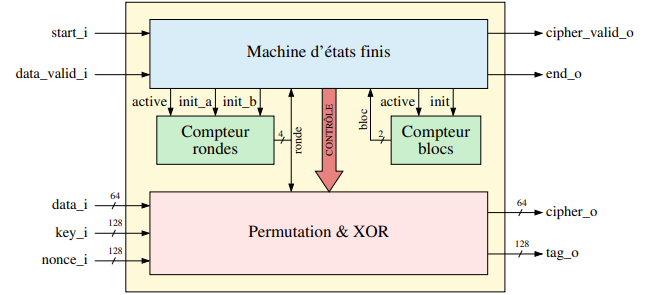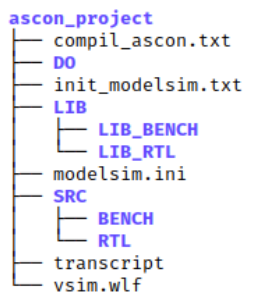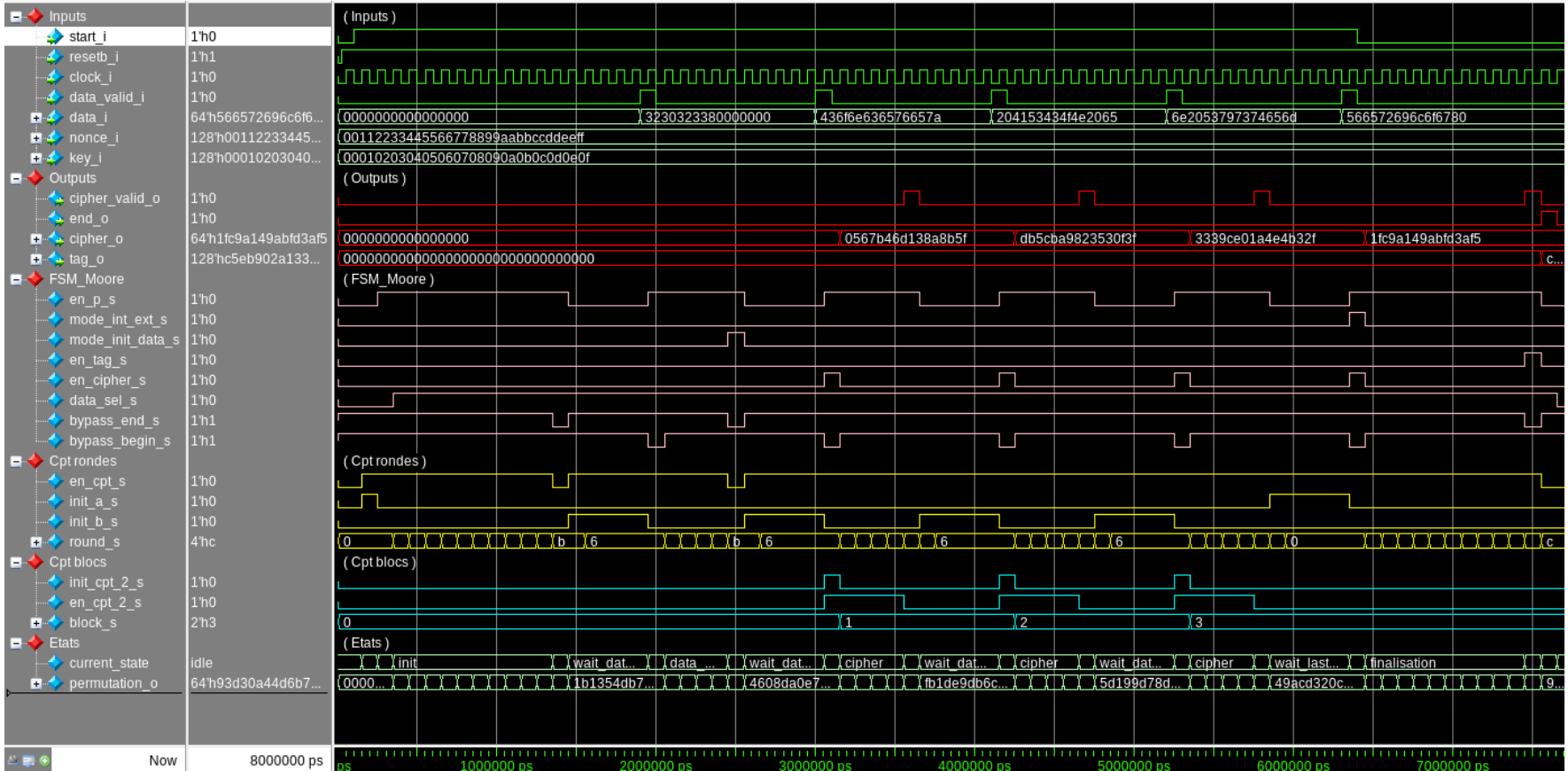Lightweight Encryption System ASCON128 in SystemVerilog
Project Details
- Project Type: Digital System Design
- Tools: ModelSim, SystemVerilog
- Duration: 1 month
- Code: Github noebackert/Ascon128
- Report: Download report
Introduction
Data security in digital communication systems is a priority for ensuring private conversations.
The project aims to design, simulate, and analyze the ASCON128 encryption system, a lightweight and efficient solution primarily used in IoT, where available resources are limited.
The NIST (National Institute of Standards and Technology) has selected ASCON128 to be the reference for lightweight cryptography.
NIST : https://www.nist.gov/news-events/news/2023/02/nist-selects-lightweight-cryptography-algorithms-protect-small-devices
Project Overview
The project involves:
- Understanding the ASCON128 encryption system
- Exploring SystemVerilog for system description
- Designing a finite state machine (FSM)
- Simulating system components
- Analyzing results for system validation
General Description of the Project
ASCON128 Operation
The ASCON128 module is divided into several blocks:
- the Finite State Machine
- the Permutation block
- the XOR blocks
- Permutation and block counters
Figure 1: General operation scheme of ASCON128 encryption method
Notations
The algorithm operates on a current state $S$ of 320 bits, composed of a vector of $5 * 64$ bits named $ (x_0, x_1, x_2, x_3, x_4) $. The state is updated using a permutation operation, either 6 iterations $ p^6 $ or 12 iterations $ p^{12} $. The state is divided into:
- An internal part of 256 bits, denoted $ S_c (=x_1, x_2, x_3, x_4) $
- An external part of 64 bits, denoted $ S_r (=x_0) $
- A 128-bit key, denoted $ K $
- A 128-bit nonce, denoted $ N $
- A 64-bit associated data, denoted $ A $
- A 248-bit plaintext, denoted $ P $
- A 248-bit ciphertext, denoted $ C $
- A 128-bit tag, denoted $ T $
- An initialization vector, denoted $ IV = $ 0x80400C0600000000
ASCON128 Operation Diagram
Figure 2: Description of ASCON128 operation
Code Structure
To maintain clarity in digital system design projects, it is essential to separate source code from test benches and compiled files:
Figure 3: Project directory structure
./SRC/RTL: Source files./SRC/BENCH: Test files./LIB/LIB_BENCHand./LIB/LIB_RTL: Compiled libraries and executables./DO: Scripts for simulation executioninit_modelsim.txt: Initialization commands for ModelSimcompil_ascon.txt: Compilation commandsDO/[module.do]: Simulation execution scripts
Simulation Results
The simulation results indicate successful verification of the encryption system, confirming correct cipher and tag outputs.
Figure 4: Complete simulation result
Initial validation data:
- K = 00 01 02 03 04 05 06 07 08 09 0A 0B 0C 0D 0E 0F (16 octets)
- N = 00 11 22 33 44 55 66 77 88 99 AA BB CC DD EE FF (16 octets)
- A = 32 30 32 33 (4 octets)
- P = 43 6F 6E 63 65 76 65 7A 20 41 53 43 4F 4E 20 65 6E 20 53 79 73 74 65 6D 56 65 72 69 6C 6F 67 (31 octets)
Result Cipher:
- C1 = 05 67 b4 6d 13 8a 8b 5f
- C2 = db 5c ba 98 23 53 0f 3f
- C3 = 33 39 ce 01 a4 e4 b3 2f
- C4 = 1f c9 a1 49 ab fd 3a (f5)
Final tag:
- T = C5 EB 90 2A 13 30 70 77 47 00 39 BC 3A 69 28 EC
We can finally verify using tools like https://motarekk.github.io/ that the encryption is correct, and we find the same result.



